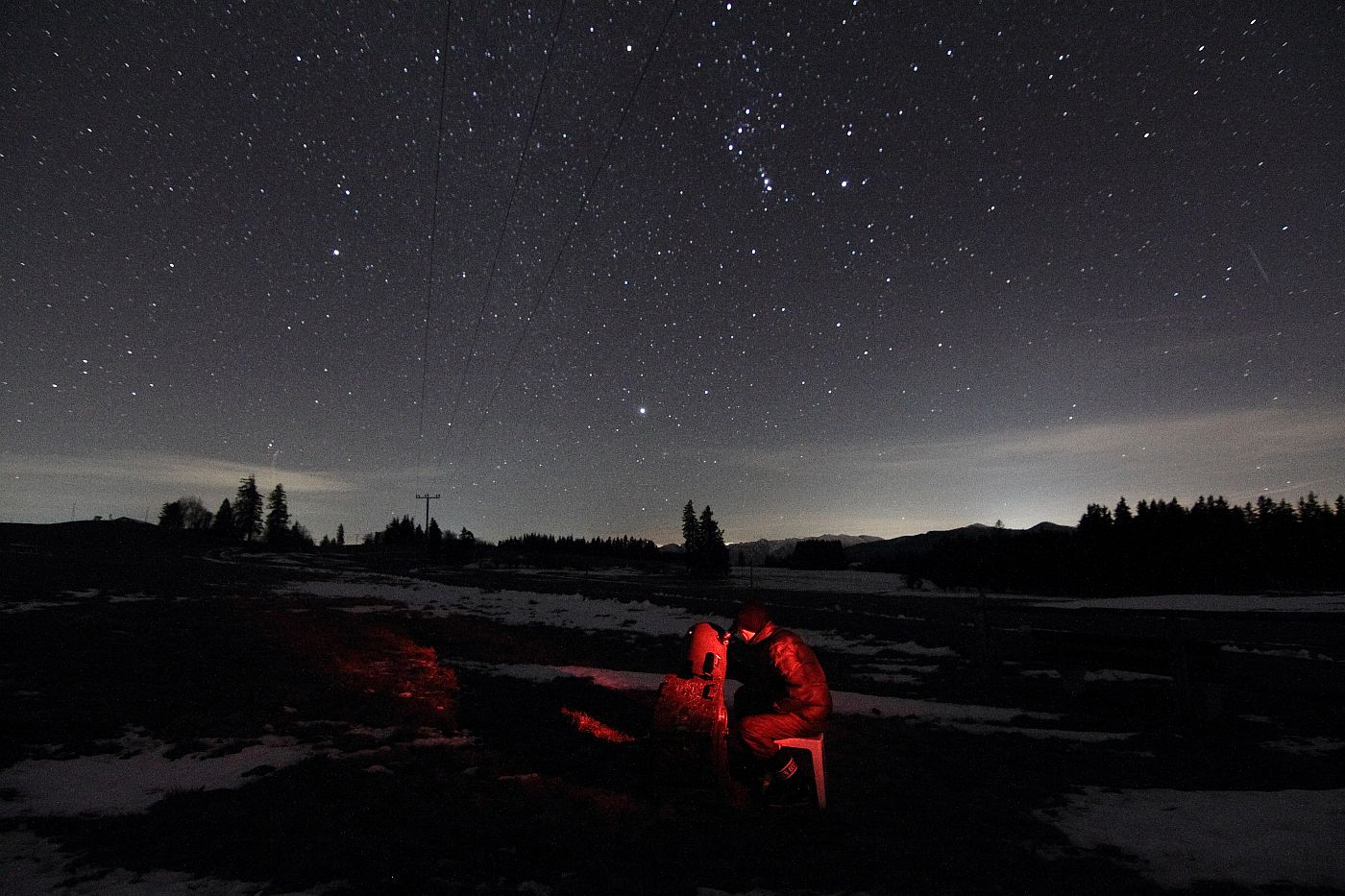

I had some rich star clusters of the Winter Sky on my menu, and specially those of the "second class" - about mag 8 in overall magnitude.
They already show good resolution into faint stars in the 10", my magnification was usually 87x (13 mm Ethos): In Gemini that was NGC 2420,
not far away from the "Eskimo nebula" NGC 2392, and NGC 2266; this cluster is really rewarding, a small compact triangle with a chain of brighter
stars on one edge, and was already "Astronomy Picture of the Day". And also - adjacent to M35 - the well known very rich cluster NGC 2158: In
the 10-inch already with lots of faint stars with 125x, especially with averted vision; but it needs more aperture to appear as spectacular as in the
16-inch. And I saw many faint stars in NGC 2194 in northern Orion, and on this opportunity also observed the unmistakable 6 mag cluster,
NGC 2169, whose two parts strongly remind of a nice "37" pattern. Other rich clusters were NGC 1245 in Perseus and Mel 71 in Puppis
- with a trip to the nearby rich cluster M46 with the embedded - closer - planetary NGC 2438.
Only 50" from the 4 mag star Mu in Orion lies the planetary Abell 12, who well responds to an OIII filter. To remove it out of the light of the bright star
a higher magnification is needed: With 190x and OIII I could clearly discern it, best with averted vision. Also nice was Abell 21, the "Medusa nebula",
with OIII-Filter and 87x. Again with 190x I could glimpse - with averted vision - the dark globule in the refection nebula NGC 1999, directly at the
central bright star; that's of course far easier with higher magnification if the seeing permits.
The Plough (Big Dipper) and the rising "sickle" of Leo
|
21:14 CET: Polar region with comet Catalina.
|
The comet Catalina has meanwhile passed the northern pole into Camelopardalis, on its way to Perseus. I spotted it in the binoculars,
and could see parts of the broad dust tail in the 10", with clearly defined edges - but there was some cirrus around when observing,
so I did not look for further details like the length of the tail. In "Astrotreff" Robin has posted an image from late January.
I occasionally look for some close doubles of the "Struve catalogue", whereby you can also judge the seeing - it seemed to get better during
the night. At around 10 PM "Struve 644" in Auriga was sharply split with 190x - with recognizable color contrast, but higher magnification
is better to see that. Here two mag 7 stars lie only 1,6" apart, the spectral types being B2 and K3: Therefore similar to Albireo, while the
Struve stars are nearly equally bright. I also showed them at our Munich VSW observatory in the 10", with 285x and 500x - very rewarding !
In between I fed on usual highlights like Jupiter, M42, h+Chi, M37 or the Rosette nebula (very nice with OIII filter). But the cirrus got more
dense, so I decided against staying up here in the sleeping bag, and returned home. It was really nice, also concerning the outdoor-experience:
For hours- once and again - you heard the hooting of the Tawny Owl, from two different directions.
The rising Jupiter already has trouble with cirrus ...
|
... and later - coming in from the West - the Winter constellations
|